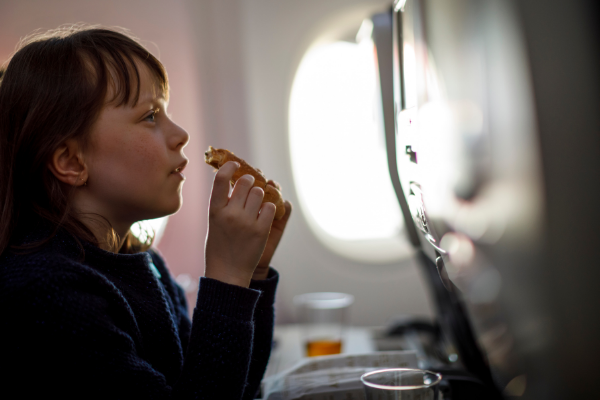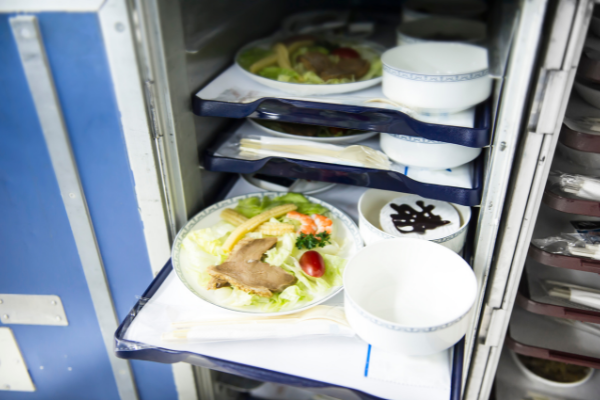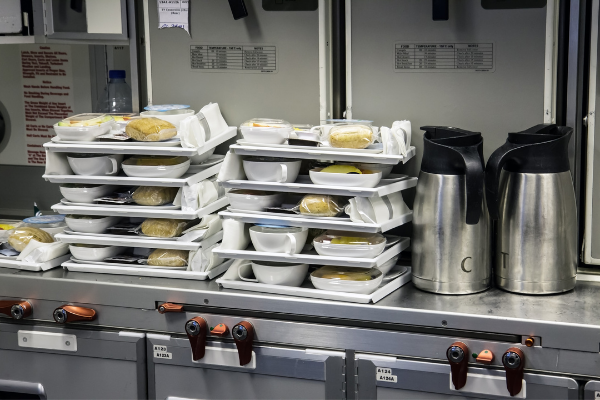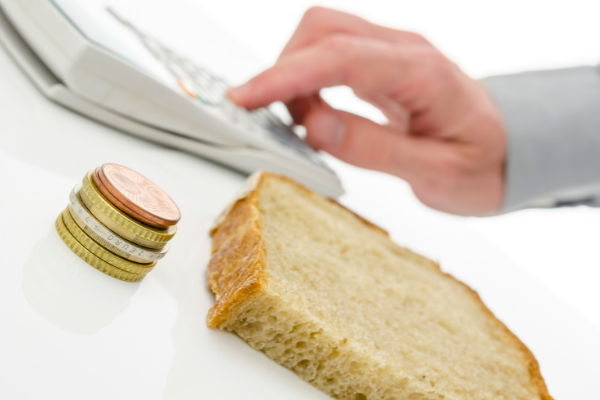
If you’ve traveled by airline, you’ve probably had a snack. If you’ve ever flown internationally or in first class, you’ve most likely enjoyed a meal onboard.
On an airplane, you might notice that food tastes different. It turns out that you are not going insane, and scientific explanations exist for why food tastes differently on planes.
It’s not always the airline companies’ fault if you find the food bland or unappetizing. When you depart the airport, your usual taste buds are left behind. However, when you board the plane and fly thousands of feet above the ground, the taste of anything from pasta dishes to wine is changed differently, which we are just starting to comprehend.
Airplane Food Is Different
Meals served on planes are significantly different from the food served on the ground. Food and drink are chosen by inflight culinary specialists on the ground due to scientific changes that take place in your body during a flight, as well as how altitude and pressure influence certain items. The food is prepared ahead of time, and any meals provided hot are reheated by members of the crew using the aircraft’s ovens.

Taste Buds and Sense of Smell
You probably know that if you’re on an airplane that’s going 500 miles an hour, you’re also going at 500 miles per hour. What you may not realize is that your body, just like the air inside the plane, is pressurized. This has a direct impact on your senses of smell and taste. When you’re in that narrow seat, and high in the sky, your sense of smell starts to deteriorate. Your nasal passageways, as well as your taste buds, both play a role in tasting.
As the plane rises in altitude, the air pressure decreases, and the humidity decreases. The climate becomes dry enough to be considered a desert. Your taste buds’ sensitivity to sweet and salty meals is reduced by roughly 30% when you combine dryness and low pressure.
Even the noise produced by jet engines might have an effect on your tongue. Loud noise can alter our taste preferences, lowering our ability to detect sweetness while increasing our enjoyment of umami flavors.
Some airlines have begun to think about these concerns and have made efforts to improve their meals as a result (mainly for first and business class). It’s important to understand how pressure, dryness, and high noise impact different flavors on flights.

The Air In The Cabin Is 15% Dryer Than Ground Air
Airlines must carefully manage the air inside the cabin to maintain the pressure. This entails altering the chemical composition of the air we breathe. The air inside airplane cabins is significantly dryer than that which we breathe on the ground. It can be dryer than some deserts in some circumstances. In this type of environment, your senses of smell and taste begin to fade. The scent starts to deteriorate when you get on a plane, but it quickly worsens as the plane climbs. Passengers get more dehydrated and have a dry mouth as a result of this.
Food is Mass-Produced And Reheated
Despite the fact that more airlines are offering better meal choices, mass-produced food will never be able to compete with your favorite dishes prepared at home and in a restaurant. Due to the difficulty of catering to everyone’s preferences, most airlines stick to less spicy or sweet options. Additionally, they should follow strict food safety laws, including cooking all meals on the ground well before the flight’s departure. This implies that flight attendants have to reheat all of the frozen meals while in the air.
If you’ve ever reheated a frozen dinner, you’re aware of the issues that reheating food can cause, such as freezer burn and texture changes. Reheating on airplanes is likewise restricted, as microwave ovens and regular stoves are not allowed.

There’s a Lot of Sauce
There’s always too much gravy or glaze on airplane meals, be it the mashed potatoes or the meat. The additional sauce is added on purpose, according to Time. They are required to reheat a huge quantity of meals rapidly and serve them swiftly, which results in the food being dry. So the airlines use more sauce than is necessary to mitigate the dryness.
You’re Expecting Bad Taste
Your expectations can influence your perception. If you expect airplane food to be bland and strange, you’ll be disappointed. The things you expect have an impact on how you see the world. During one study, people were given ice cream made with smoked salmon. Those who ate it with an ice cream label were more likely to appreciate it than others who consumed it with a “frozen savory mousse” dish label. The name change was enough to affect people’s opinions about the dish.
Your reaction alters when you believe you are eating a gourmet dinner. Food that isn’t fancy doesn’t make you like it less if you think it has to taste good. The same is true on a plane in the opposite situation. When you expect the meal to be dull, strange, or inexpensive, you’ll think something is wrong with each bite and dislike the experience.
Tight Budgets Have An Impact On Food Options
While airlines have increased several meal selections in recent years, the majority of passengers flying economy class do not receive gourmet food. Certain airlines consider food as an additional line item on their budget spreadsheet that might be reduced or eliminated.
To conserve money, one Indian airline, for example, decreased the amount of cheese provided to passengers during flights. Another airline saved money by removing olives from their salads. In addition, many companies strive to use less expensive and more convenient ingredients to stay within their budgets.

What Foods Taste Better In An Airplane?
If you can choose your in-flight meal, go for bold flavors that will make your meal more interesting and fun. If you want your food spicy and seasoned, try Thai or Indian food. Spices like cardamom and lemongrass have a stronger flavor. Umami flavors in cheeses, soy sauce, and curry also have a stronger flavor in the sky than sugar or salt. If you find meats with a sauce, choose that option because the sauce will keep the protein from drying up completely.
